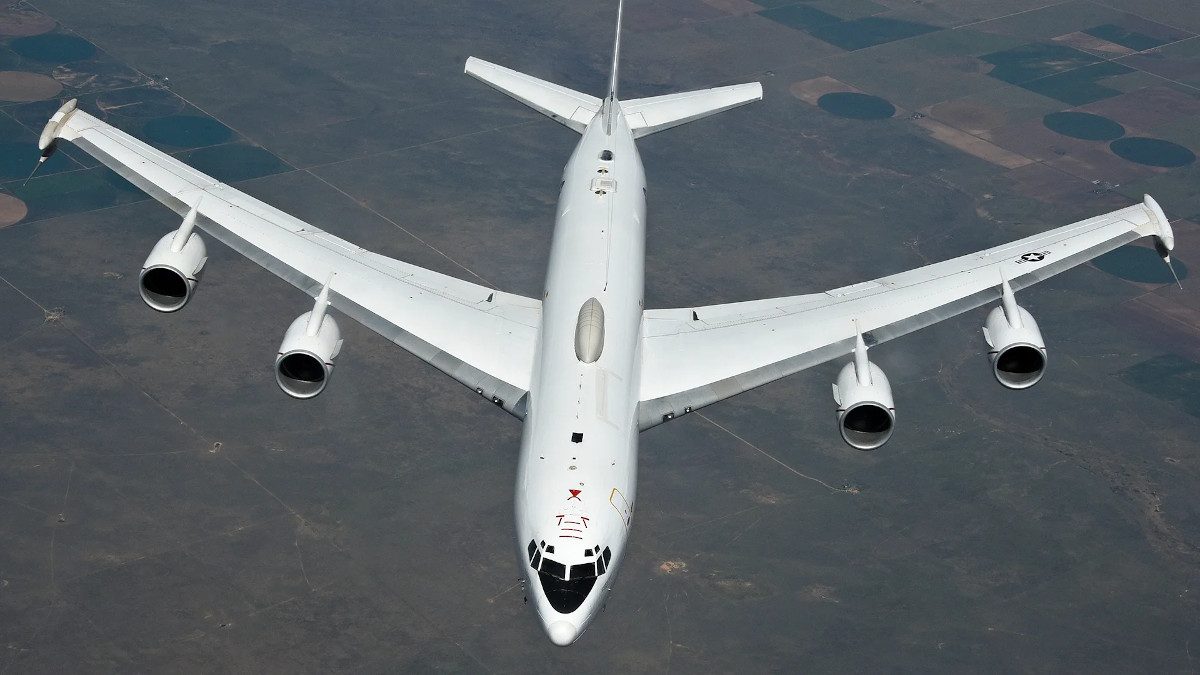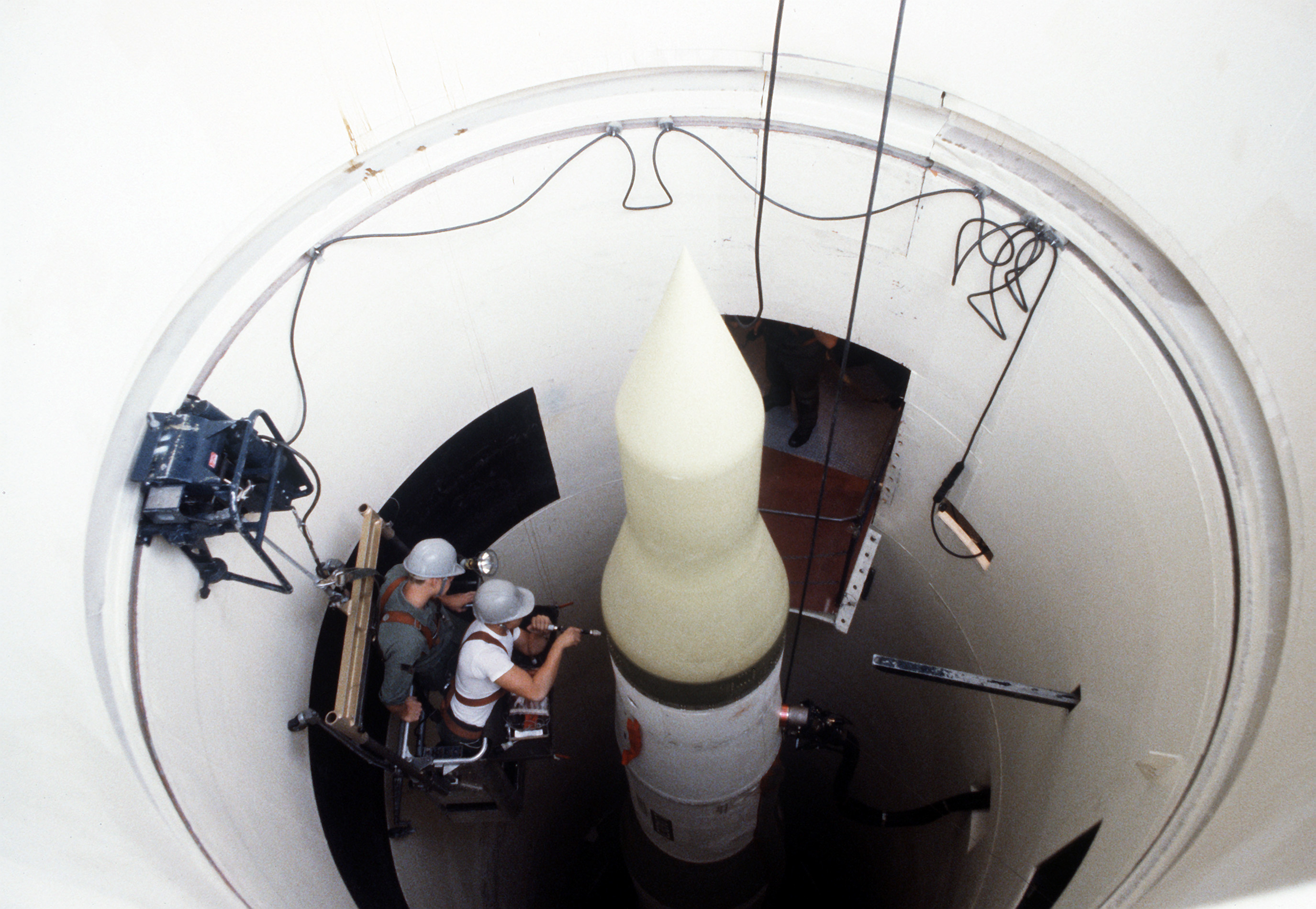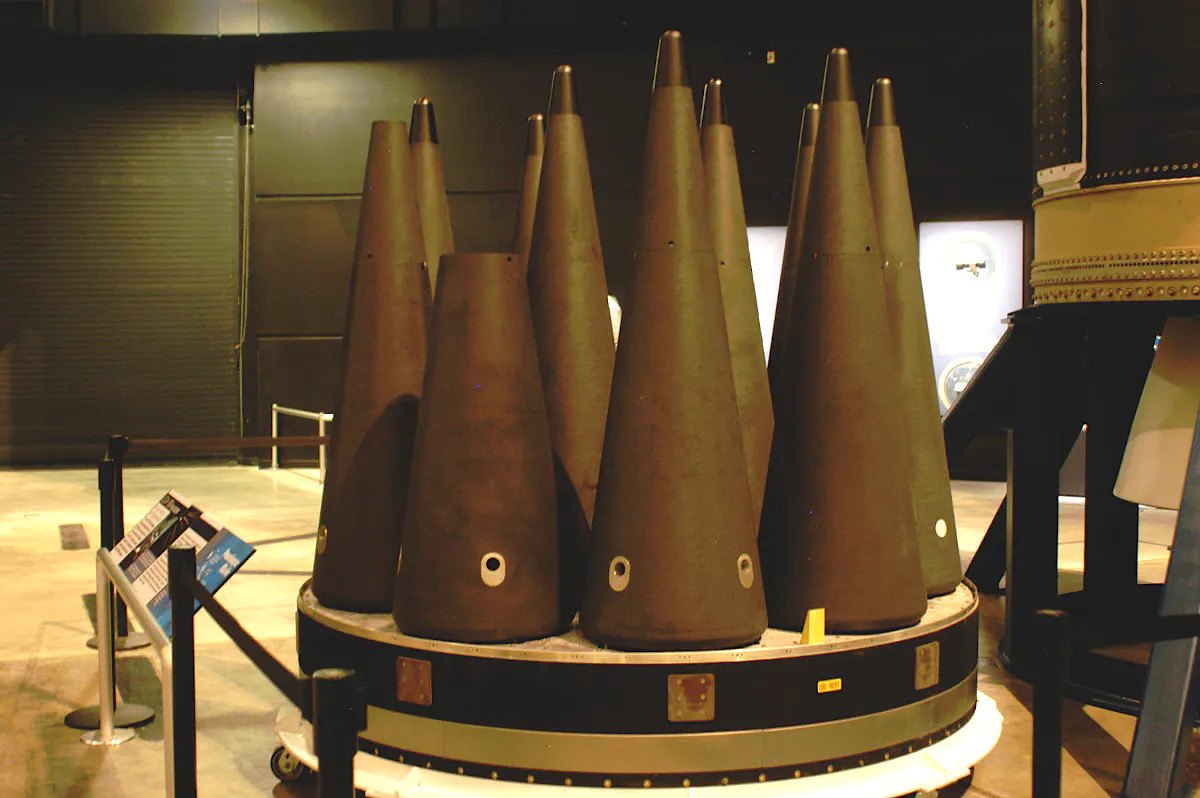The U.S. Air Force has conducted a scheduled test launch of an LGM-30G Minuteman III intercontinental ballistic missile with a very unusual load of three unarmed reentry vehicles. All operational Minuteman IIIs are presently armed with only one warhead in a single reentry vehicle as part of the United States’ obligations on the New Strategic Arms Reduction Treaty, or New START, making this a unique, but timely test considering the geopolitical landscape.
Air Force and Navy personnel onboard an E-6B Mercury airborne command post aircraft actually fired the missile in this particular case using a specialized launch control system. The joint crew of the E-6B launched the Minuteman III from a silo at Vandenberg Air Force Base in California using the aircraft’s Airborne Launch Control System (ALCS) at approximately 12:21 AM local time on Aug. 4, 2020. Air Force Global Strike Command (AFGSC), which oversees America’s intercontinental ballistic missile (ICBM) force, as well as the service’s heavy bomber fleets, both nuclear-capable and conventional, said that the launch was otherwise routine and had been planned between six months to a year prior.
“The flight test program demonstrates one part of the operational capability of the ICBM weapon system,” Air Force Colonel Omar Colbert, head of the 576th Flight Test Squadron at Vandenberg, said in a statement. “This visible message of national security serves to assure our allies and dissuade potential aggressors.”

At the core of the concept of nuclear deterrence is ensuring that no opponent feels confident that they can launch a nuclear attack and escape retaliation. As such, regular testing, at least of delivery platforms, is generally required to both make sure that everything is working properly and to demonstrate this clearly to potential adversaries.
The ALCS onboard the E-6B is an important component of this deterrent capability, providing an alternative means of launching the missiles remotely if other command and control nodes get destroyed. You can read more about this particular system and the rest of the command and control apparatus that supports the ICBM force in this past War Zone piece.

But if the test was entirely routine, the detail that the missile was carrying three unarmed reentry vehicles, in this particular instance, was not. Under the New START treaty, both the U.S. and Russian governments agreed to limit how many warheads they had deployed at any one time, among other things. While the agreement does not prohibit the deployment of ICBMs with Multiple Independent Reentry Vehicles (MIRV), the United States has decided to field some 400 Minuteman IIIs, at least publicly, with just one warhead each inside a lone reentry vehicle. This keeps the overall warhead total down, but the number of missiles up. This makes sense considering the U.S. strategy of using its ICBM force as a ‘nuclear sponge’ that would absorb Russian warheads on purpose should the apocalypse come. You can read more about this bizarre arrangement in this past piece of ours.
The Air Force first developed the Single Reentry Vehicle (SRV) modification for the LGM-30G as part of preparations for the Strategic Arms Reduction Treaty II (START II) treaty, which banned MIRVs. Minuteman III, which first entered service in 1970, was America’s first MIRV-equipped ICBM. Though signed in 1993, START II never truly entered force, with Russia completely withdrawing in 2002 in protest to the United States’ pulling out of the Anti-Ballistic Missile Treaty. The subsequent Strategic Offensive Reductions Treaty (SORT) and New START agreements do not have specific provisions for MIRVs. The Navy’s Trident D5 submarine-launched ballistic missiles do have MIRVed warheads.

It’s not clear when the last time the Air Force tested a MIRVed Minuteman III was, but typically these types of tests involve only a single unarmed reentry vehicle, as would be the case in an actual operational launch. It is not entirely unheard of for these launches to involve more than one reentry vehicle. Another official press release says that the LGM-30G test launch on Feb. 8, 2017, also involved “test reentry vehicles,” plural, but did not say exactly how many.
It’s unclear why this latest launch featured three reentry vehicles. It is possible that it could be part of a research and development effort and it was simply easier to collect certain data by launching three re-entry vehicles at once, rather than over the course of three separate missile tests. Still, this wouldn’t be reflective of the actual deployed configuration, with puts this possibility into question. In October 2019, the Air Force awarded a contract to Lockheed Martin to continue the development of the Mk 21A re-entry vehicle, an improved version of the Mk 21 that sits atop some Minuteman IIIs now.
Each Mk 21 holds a W87 thermonuclear warhead, a combination that was originally developed for the now-retired LGM-118A Peacekeeper ICBM and that you can read about in more detail in this previous War Zone piece. Other Minuteman IIIs are armed with one W78 thermonuclear warhead in a different reentry vehicle. The Mk 21A, which will hold an improved W87-1 warhead, is set to be the primary armament of the Air Force’s future Ground-Based Strategic Deterrent (GBSD) ICBMs, which are in development now to replace the existing LGM-30Gs. The Air Force expects to begin fielding the GBSD sometime in the late 2020s or early 2030s.

The Air Force could have also tested the MIRVed LGM-30G to highlight that it retains the capability to arm missiles in this way should the need or desire arise, which would be in line with both the uncommon payload and the service’s decision to highlight it very specifically in the official press release. This test does notably come at a time when U.S. President Donald Trump’s administration is in negotiations with their Russian counterparts about extending New START with amended terms. The treaty is set to expire next year unless both parties agree to extend it out to 2026. After that, it will be necessary to negotiate an entirely new deal.
The Trump Administration has been focused on getting Russia to agree to limits on various novel strategic systems, including nuclear-armed hypersonic missiles, as well as nuclear-powered and nuclear-armed cruise missiles and long-range torpedoes, as part of discussions about extending the agreement. The U.S. government also wants China to join this strategic arms control regime, which authorities in Beijing have repeatedly expressed little desire to do.
If New START were to collapse without a replacement treaty in place, the United States would have a free hand to re-MIRV all of its Minuteman III missiles, as well as develop that capability for the new GBSD. There could be a perceived incentive to do so given Russia’s own deployment of various MIRVed ICBMs, which could expand in the absence of any armed control agreement. Adding two more reentry vehicles to each deployed LGM-30G would increase the total number of deployed warheads across the ICBM force from 400 to 1,200 with minimum effort.
As such, it’s very possible that this could have acted as both a test of the weapon’s latent MIRV capabilities and as a message to Russia that without New START, America’s ground-based nuclear deterrent could become exponentially more destructive.
We have already reached out to the Air Force for more information about this particular test and will be sure to update this story with any new information we receive.
Update: 2:25 PM EST—
A spokesperson for Air Force Global Strike Command has now confirmed to The War Zone that a test launch of a Minuteman III ICBM with three reentry vehicles is not common and that that the last time one occurred was on Apr. 25, 2018. AFGSC conducts between four and five LGM-30G test launches each year to support various requirements.
Contact the author: joe@thedrive.com
